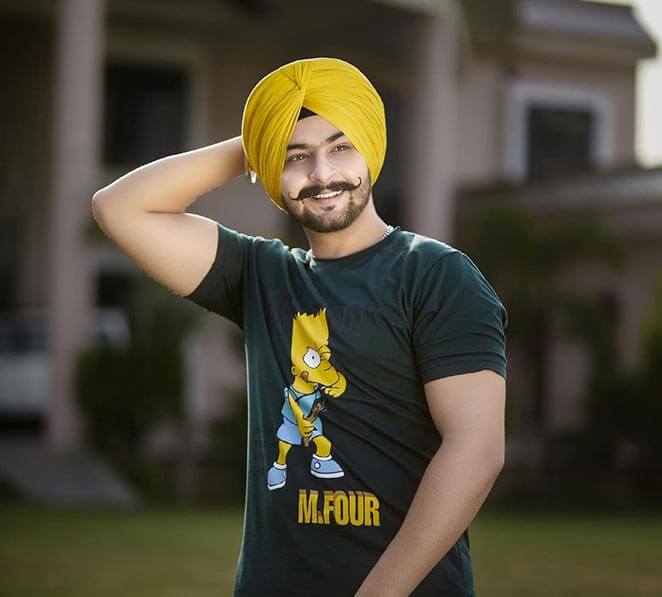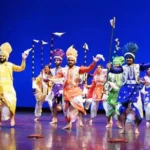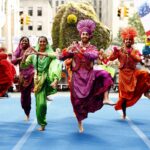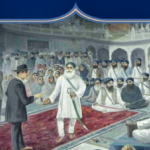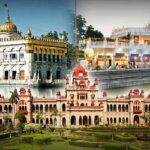Punjab is the land of five rivers in northwestern India and northeastern Pakistan. Punj means five and aab mean water, so Punjab means five glasses of water. The names of these five rivers were Beas, Satluj, Ravi, Chenab, and Jhelum. Beas and Satluj. These five rivers divide the state into three regions: Majha, Doaba, and Malwa. Punjab has natural advantages and fertile soil that provides good cultivation. Punjab is the oldest civilization on earth and has its distinctive language, culture, food, clothing, script, folklore, people, etc. The Punjabi language has its source in Sanskrit (not Hindi or Urdu as many young Indian Pakistanis believe) so the family is the Indo-European group of languages that includes Persian and Latin. Punjab has always been a land of great saints and warriors.
Sri Harmandir Sahib
Tourist Places – Punjab is the place of Sikhism. The holiest of Sikh shrines, Sri Harmandir Sahib (or Golden Temple), is in the city of Amritsar. Of the five Takhts (temporal seats of religious authority) of Sikhism, three are in Punjab. These are Sri Akal Takht Sahib, Damdama Sahib and Anandpur Sahib. Punjab is one of the leading states of India in terms of infrastructure. It is also known for its sports and hosiery industries. Enjoy the unique hospitality and warmth of the natives. Some of the leading tourist attractions in Punjab are Amritsar-Golden Temple, Jallianwala bagh, Wagah Border, Maharaja Ranjit Singh Museum, Patiala – Sheesh mahal, Quila Mubarak, Moti Bagh Palace, Kali Devi Temple, Chandigarh – Sikh Ajaibghar, Sukhna Lake, Rock Rock, rose garden, etc.
Punjab cuisine
Punjabi Cuisine – Punjabi Cuisine has a large selection of tasty vegetarian and non-vegetarian dishes. In Punjab, home cooking is different from the restaurant-style of cooking. In restaurants, use desi ghee, butter, and cream to make the food lip-smacking and finger-licking. On the other hand, at home people prefer to use sunflower oil or other refined oil in cooking with the basic idea of keeping the food low in fat. The main traditional Punjabi food is – Sarson ka saag, Shahi paneer, Dal makhani, Rajma, Chole, Aloo, Chicken karahi, Chicken Tandori, Makki di Roti, Naan, Phulka, Puri, Papad, Lassi, Kheer, rabri.
Culture of Punjab
Culture and Traditions of Punjab – Punjabi culture is the richest culture in the world. Punjabi songs are full of melody and energy. Punjabi dance styles have more flavor with bhangra, giddha, kikli, and Sammi. Bhangra” is one of the most famous dance forms of Punjab. With loud dholak drumming, people dance enthusiastically to the tunes of music. “Giddha” is another important dance variant practiced by Punjabi women. Bolis are lyrically sung and danced by women. Other popular dance forms are Jhumar, Dhankara, and Gatka. Regardless of age or religion, Punjabis love to dance and have fun during celebrations. Folk music is the soul of Punjabi culture. Folk music consists of simple musical instruments, like the dholak and dhol drum. Punjabi music relates to the enthusiastic people of Punjab. Boliyas are sung and music is played under the lyrics. The wedding gamut ranges from emotional interludes to very spicy beats where there is the constant admonition of the bride and groom. A sense of humor is essential to enjoying wedding songs.
Traditional clothing
The traditional attire of the people is Kurta-pyjama with a turban for men. Women prefer Patiala suits as part of their traditional attire. There is a riot of colors in the pagdi-turban and phulkari dupattas that come out during the Baisakhi festival. The traditional attire of Punjabis consists of a salwar-kameez for women and a lehenga-kurta with a waist that has many colors and styles. Turban styles can be explored and are mandatory for all Sikhs.
Arts and Crafts of Punjab
Arts and Crafts of Punjab – Punjabis are famous for their utmost interest in arts and crafts. Many phrases have decorative patterns and handwork. Women wove woolen garments for everyone in the family. “Phulkari” is recognized worldwide for its intricate work. Silk scarves are carefully handwoven using traditional motifs as patterns. Other well-known crafts of the region include lacquer work, woodwork, calico painting, paper-mâché, and many others. Wooden furniture is beautifully crafted by artisans with excellent craftsmanship.
Amritsar has always been culturally very rich as a place. The city of Amritsar is an important part of the Indian state of Punjab. From time immemorial, Amritsar has been keenly interested in music and literature, which form the essential elements of the culture of the place that distinguish one place from another. Amritsar literature and music are thus very close to people’s hearts.
The fifth Sikh Guru, Guru Arjun Dev, was largely responsible for making the city of Amritsar the heart of religious literature. The home of the early days of Punjabi poetry, Amritsar also played a nursery for literature on the religion of Sikhism. Mahakavi Santokh Singh and Bhai Veer Singh are two very important personalities who contributed significantly to the literature of Amritsar.
In the recent past, during the 1990s, the city of Amritsar in Punjab underwent a convergence of several traditions. This was greatly reflected in the literary works of great people like Giani Harinder Singh Roop, Dhani Ram, Feroze Din Sharaf, Girami, Nanak Singh, Saadat Hasan Mantoo, Faiz, Maula Bakhsh Kushta, and Gurbax Singh. Their works were highly regarded and contributed immensely to Amritsar literature.
The great city of Amritsar is also the heart of Shabad based on Hindustani Raaga which are the writings of Sri Guru Granth Sahib. It takes a lot of skill to sing these Raaga-based Shabad representations.
The city is the seat of Amritsar music and takes great pride in producing the maximum number of harmonies in the state of Punjab. Harmonia and other musical instruments are easily available in Jallianwala Bagh and Town Hall area.
Sikh Kirtan
Sikh Kirtan is an integral part of Amritsar literature and music. Guru Nanak founded the Sikh tradition of Kirtan, which is also known as Gurmat Sangeet. It was in the early years of the 16th century that this form of kirtan was first started. Guru Nanak’s followers, especially Guru Arjan, strengthened and popularized it. These Sikh Kirtans are sung in the Golden Temple and other Gurdwaras of Amritsar city.
Sikh Kirtan is performed with due importance to taal, raga, and dhuni. There are three types of Sikh musical groups that flourished during the period of the Sikh religious gurus. These are
Ragis
Rababis
Dhadhis
Ragis were originally amateur singers who were encouraged by Guru Arjan to perform Sikh kirtans and become independent artists. Earlier, Ragis were dependent on professional Rababis. Kirtan singers are known as ‘Kirtaniyas’.
Rababis is the name given by Guru Nanak to the second group of kirtan singers. It was because the rababs were playing the rabab. Some of the most popular Rababis are Mardana, Balwand, Satta, Babak, Chatra, Shahjada, Saddu and Baddu. They all performed Kirtan in Amritsar before partition in 1947.
The third type of Kirtaniyas was introduced by Guru Hargobind. They were called dhadhis and were suggested by the Guru to sing vaars meaning heroic ballads in his court. These kirtans inspire the bravery and heroism of the Sikhs
These are still very popular today and Sikh Kirtan has contributed a lot to the cultural tradition of Amritsar.
